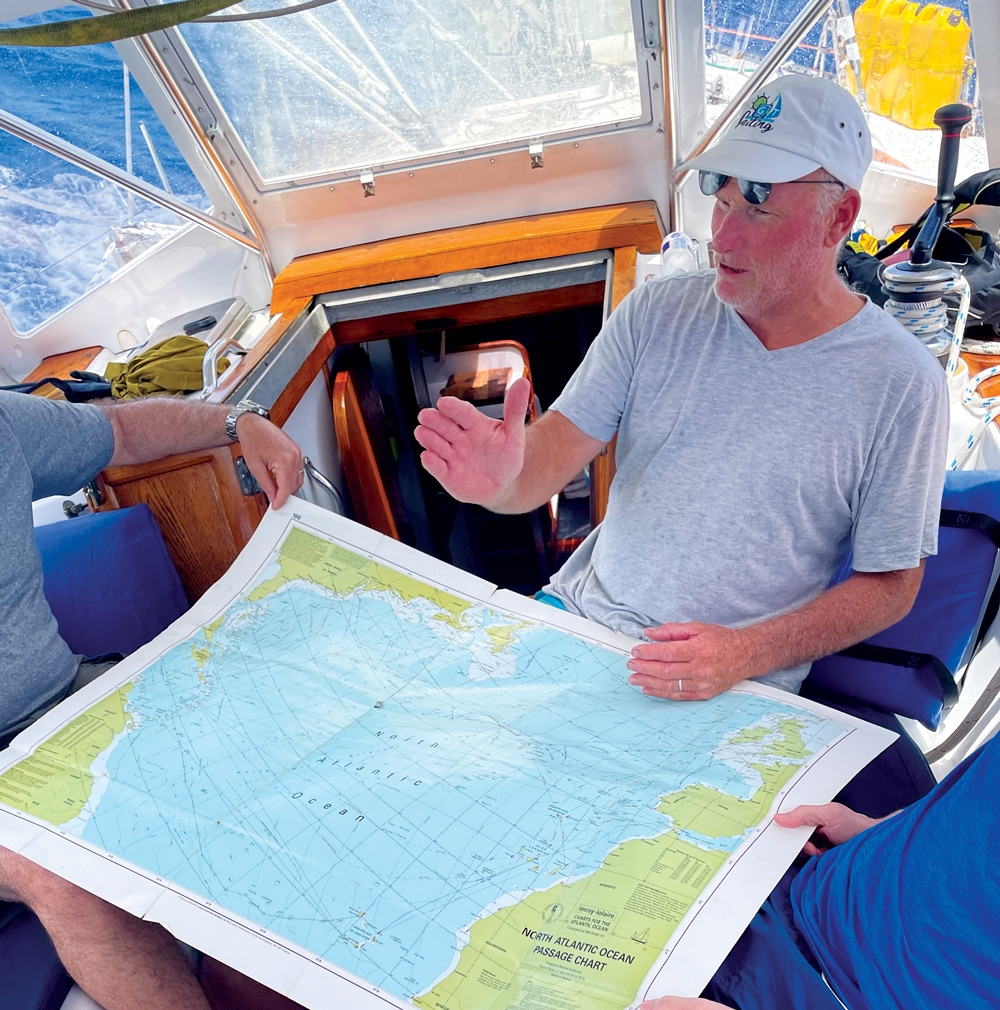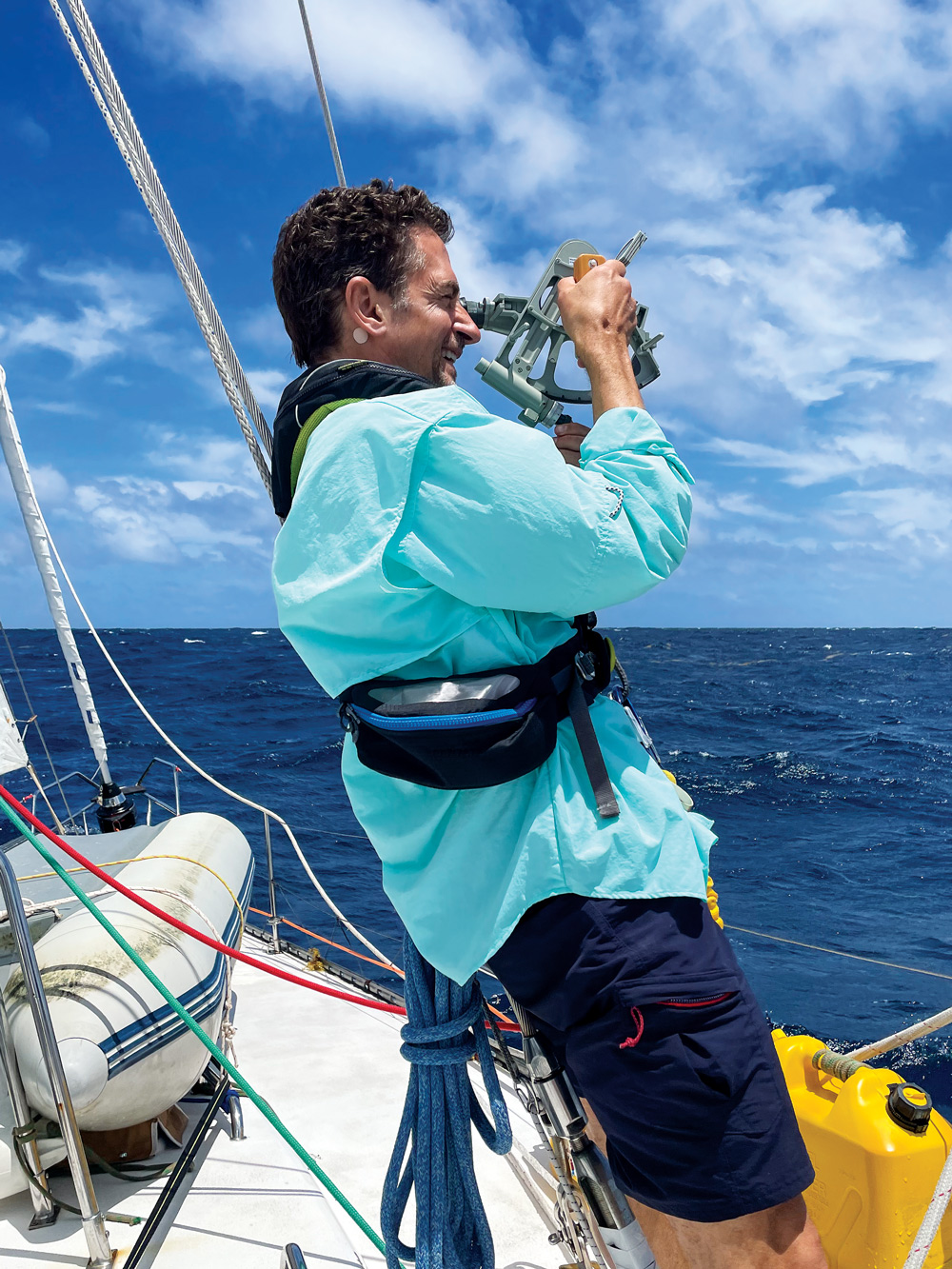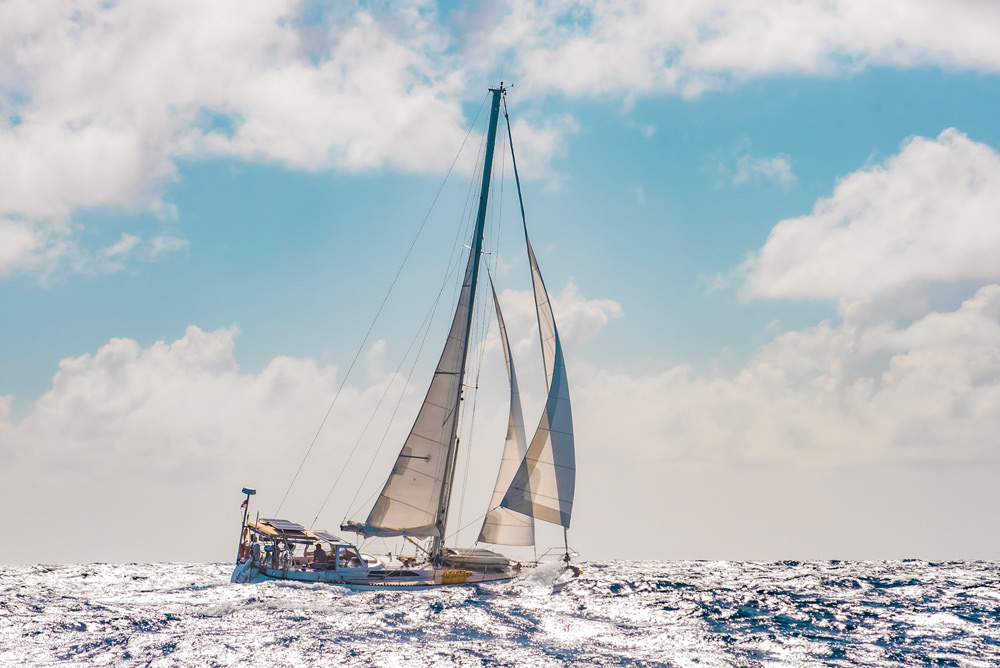Passage to nowhere
With exotic landfalls out of the question, John Kretschmer discovered a new way to do sail-training passages: make seafall instead
Close your eyes. You can hear the waves washing along the hull and feel the raw power as Quetzal sails into the heart of the Caribbean Sea on a sweet close reach. She rides the building easterly swell with the confidence of a

With most Caribbean islands continuing to require varying degrees of quarantine for arriving sailors, the notion of sailing to nowhere was born. Ironically, several passages to nowhere later, I have realized that not being a slave to waypoint is a great way to learn about ocean sailing. Instead of a passage being all about the destination with the inexorable countdown to landfall, a passage to nowhere is all about sailing and living in the moment.
For my most recent training passage, the crew, after complying with strict but workable Covid-19 protocols, made their way to St. Thomas in the U.S. Virgin Islands and joined me aboard Quetzal. Our float plan was to first sail to St. Croix, a lively 40-mile shakedown, then head south, bound for nowhere in particular. After a few days of vigorous reaching in the trade winds, we would make “seafall,” tack and sail back to St. Croix. The passage also includes a couple of days of island hopping around the lovely U.S. Virgin Islands.
One hundred forty-nine training passages later, I still begin every voyage with a serious and sobering safety briefing. We spend a couple of hours talking about how to manage the boat and your body. My message is direct,

safety cannot be separated from seamanship: a good sailor is a safe sailor. I explain that managing your body is vital offshore. You need to sleep and stay hydrated. The magic of offshore sailing happens when you feel as well aboard as you do ashore. We also talk about moving about the boat; how to keep your center of gravity low, to work from the windward side whenever possible, to lean into the boat and don’t trust the poorly named lifelines, and most importantly, to be aware of where the loads are. There’s a lot more to safety than buying an expensive PFD with a built-in harness and fancy tether.
Then we talk about a person falling overboard and I don’t pull punches. It is ridiculous that we consider retrieving a person overboard a “technique,” with supposedly various ways to respond. At sea, a person overboard is a dire emergency. It’s a disaster that almost always ends badly. We don’t tell our kids, “After that car hits you, this is what I want you to do.” We tell them, “Pay attention, look both ways, make eye contact with the driver, don’t get hit!” Falling off the boat is a really bad thing to do, so don’t do it. From that starting point, we talk about our emergency plan of action. It’s simple. I believe in the immediate heave-to manoeuver. We have practiced this hundreds of times, with every possible sailplan, including poled out headsails and asymmetrical spinnakers. No matter the point of sail, when someone goes over, immediately steer aggressively into the wind and put the boat in irons, essentially heaving-to. You will end up very close to the person in the water and drift in the same direction. You then bring the boat back into the wind and stall next to the person and at that point attempt a retrieval. Trust me on this, the concept of the figure-8 person overboard technique, where you first sail away from the person, should be stricken from your brain.


Comments